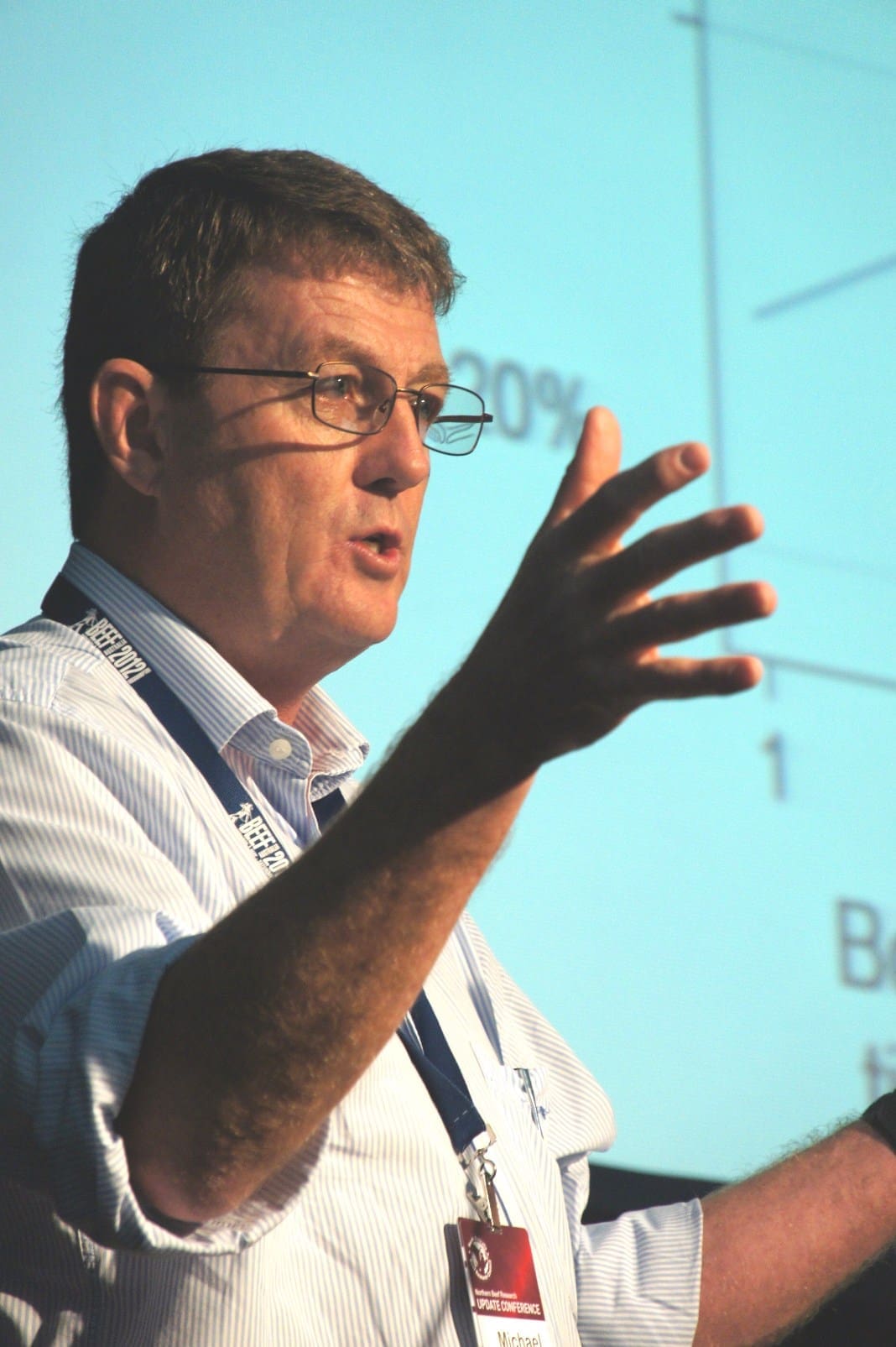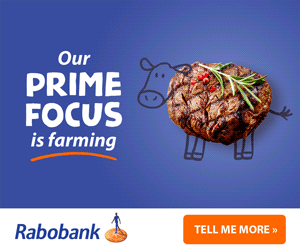 In this novel approach to delivering a message, veterinarian and beef consultant Phil Holmes explores the common lack of industry understanding about the impact and management of pestivirus, as described through a phone call…
In this novel approach to delivering a message, veterinarian and beef consultant Phil Holmes explores the common lack of industry understanding about the impact and management of pestivirus, as described through a phone call…
Hi Sebastian,
I think we may be dealing with Pestivirus (PV) with the abortions in these purchased heifers. There has been a lot of it about, given that the re-stocking process is still pretty active.
My justification for this advice? Well, to my shame as a dinosaur, I knew nothing about this disease when I graduated as a vet, because it did not officially exist. Back then, it was referred to as Mucosal Disease, but almost nothing was known about it.
Then, eventually, along came Professor Michael McGowan from University of Queensland who was one of the principal veterinary scientists who worked it all out. How they did this continues to amaze me, as it is so complex.
I had been working with a large commercial beef herd in NSW for about ten years at the time, and every year there was a tail on the weaners of about 30 percent. The tail always looked like they had not packed their lunch for the day and a lot of them died before sale.
I tested for everything: worms, liver fluke, deficiencies including copper and selenium. Not cobalt as the herd was not located on the coast. Ah… selenium! I got the usual results that almost everyone else does…. marginal.
So, I set up a response to treatment trial and, like many others who do this, got no significant difference in the results. This is not to say that response to treatment trials are a waste of time, it was just my experience with selenium in this herd.
Then the PV knowledge started to roll out and I woke up one morning wondering if it could be the cause. A few tests later and bingo – PV – it was in this herd.
It was then that I started to study what was known about the disease since I had graduated, and take it seriously. The first thing I learned was that, to date, we have only Type 1 of the disease in Australia. We do not need Type 2, believe me, as it is much worse and is currently confined to Europe and North America.
Oh, okay, the local vet has just confirmed it is PV in your herd from the aborted foetuses. Good, let’s proceed with more informed discussions.
To the best of my understanding there are many presentations of strains of PV resident in Australian beef herds, but the strains are all genetically similar enough for it not be an inhibiting issue in terms of prevention.
Some strains have deleterious effects on reproduction, some on weaner growth and some on both. In the herd mentioned above, it was only weaner growth, but in your case, it appears to be reproduction. Survey results of PV prevalence nationally vary, but sit in the range of 70-90pc. It’s everywhere, with geographical and climatic barriers being non-existent.
One day the phone rang; it was somebody from Pfizer, who had heard somehow that I knew a bit about modelling beef herd responses to various forms of stress. They had not long launched PV vaccine and asked me to model the financial impact of PV on a commercial herd.

Mike McGowan
I had to learn an awful lot in quick time, so I went to the source, Prof Michael McGowan at UQ. I spent a lot of time with Michael, such that I could model the financial effects with close to a full understanding. I could not have done it without him; he is a legend.
I eventually developed the model and was astounded by how little PV production loss could justify the expense and effort of a prevention strategy.
I then went on a roadshow around the country to extend the results showing that only mild PV infections justified the use of the vaccine.
Pfizer loved it, but I was mostly seen as being in their pocket, the major problem with sponsored presentations. A lot of the time, the presentations were met with giant yawns and indifference, which got bigger the further north I travelled, as the audience sizes shrank, except for those producers who had experienced a train wreck.
It took me a while to work out what was happening here. The impact of PV on a herd is highly dependent on the stocking rate and individual animal contact, which goes hand in hand with the ability of the manager to actually see that there may be a problem.
In vast landscapes in the north, you are unlikely to see it. Out in the remote paddocks on a station, there may be a train wreck happening in a particular mob in a particular paddock, and all you will see is a reduced overall weaning percentage down the track. As there are so many other potential causes of this, PV is seldom regarded as a serious culprit.
Alas, such is the case in the beef industry a lot of the time with critical issues that affect production, but are not always evident visually.
Did someone mention genetics?
And so here is some advice, Sebastian…
And so here is some advice, Sebastian…
Thank goodness the rest of your herd is fully vaccinated. However, if you have not already done so, please try to isolate the affected mob from the rest of the herd. In this instance, it is more than a paddock fence, try to have a whole paddock buffer if possible. Over the top-wire contact on a paddock fence can spread PV.
After the last calf in the affected mob is born, please try to collect ear-notch, blood or tail hair samples from all the surviving calves in order to identify the persistently infected calves (PI’s). Your local vet can give you the details on the process.
Not all PI’s look like death warmed up – some of them are big, fat and shiny
All the PI’s need to be removed from the mob and sold to the works at the first available opportunity. Almost all of them will be dead anyway by the time they are two years of age, as they do not have a competent immune system. Just note that not all PI’s look like death warmed up; some of them are big, fat and shiny for a while and without the tail hair test you could easily miss them. The laboratory folk look for PV DNA in the tail hair roots.
 If you do not do this, the primary mode of transmission of PV will be left unchecked. The first 100 days or so of gestation is where all the perpetuation of the disease is created. This is because the immune system in the foetus does not start to develop until after that. Prior to that, the foetus cannot recognise foreign pathogens and begin to mount an immune response.
If you do not do this, the primary mode of transmission of PV will be left unchecked. The first 100 days or so of gestation is where all the perpetuation of the disease is created. This is because the immune system in the foetus does not start to develop until after that. Prior to that, the foetus cannot recognise foreign pathogens and begin to mount an immune response.
So, a PI comes along early in mating and any immunologically naïve female will take virus particles into her whole system from contact with that PI, including her foetus, with little or no defence. The PI’s shed millions of virus particles in every millilitre of tears, saliva, urine and faeces.
When the virus particles get into the foetus before day 100, they stay there and effectively by-pass whatever minor development of the immune system there may be in that foetus, as well as causing other issues. If the foetus survives until after birth, it too will likely be a PI.
This low level of PI’s remaining undetected from year to year keeps PV going in any herd. It tends to be a roller-coaster ride – some years may go by with little to see and then there is a train wreck; rising and falling levels of whole herd immunity explaining this.
There is no need to do anything with your purchased heifers, irrespective of the fate of their calf, as they are unlikely to perpetuate PV – only PI’s can do that. If you want to, you can collect blood from all the heifers and test for exposure to PV. The results will come back with a score of 0, 1, 2, or 3 – 3 being red hot recent exposure.
I wouldn’t bother, as this is a diagnostic test and is primarily designed to investigate if any given herd has PV smouldering away, rather than confirming an outbreak. It can confirm an outbreak, depending on how the blood scores look, but you have already done that.
Just make sure that all the heifers get two doses of vaccine before the next mating. You could argue that the blood test would allow you to by-pass the 3 score heifers to save a vaccination buck this year as their natural immunity will be strong at the moment. It will wane over time without vaccine and I know that you are too sensible to think like that.
So-called “auto-vaccination” strategy has been shown to be a partial failure at best, and a complete failure at worst
The so called “auto-vaccination” strategy has been shown to be a partial failure at best, and a complete failure at worst, despite it still being advocated by some vets – which totally confounds me.
To be fair, it was all that we had before a vaccine came along, but we have moved on; some vets and producers haven’t, unfortunately.
Auto-vaccination involves ensuring that identified PI’s are in the yard during yard weaning and infect everything in the yard, just like kids in pre-school do. The problems with this strategy are firstly that there are not always enough PI’s available for the task to be effective in any given year and secondly, the production loss from this can be significant.
When a PI infects an immunologically naïve weaner, the latter has its immune system knocked out of the park for four to six weeks and in that time, it is susceptible to respiratory and other diseases that can cause production loss.
There is not a lot of data available on the financial impairment of the auto-vaccination strategy in commercial grass-fed beef herds, but the feedlot industry is very aware of it. They have shown that if a PI is introduced into an otherwise healthy pen of steers, the production loss is in the order of $50/head (before the latest beef price hike). Of course, this loss level is very difficult to detect with the naked eye, but the teensy problem is that $50 is close to the total margin on the beast for the feedlot, a lot of the time.
The loss in the weaning yard may be more or less than this, but the date for sale and hence recovery time is further away than in the feedlot.
It would be so useful if somebody decided to set up a trial to compare auto-vaccination to product-based vaccination and follow the results through the whole herd for ten years or so. There are two chances of that happening, as ten-year trials in agriculture these days are as rare as bulls in northern Australia being sold with BreedPlan information objectively describing their genetic potential.
Those bulls hardly exist in the broad scheme of things – like ten-year trials.
There is only one realistic and evidence-based option… product-based vaccination. Here we go again!
In my presentations mentioned above, there was always a Pfizer representative present and the question of PV vaccination effectiveness was always raised. The answer was consistent at around 80pc.
When that number was quoted, you could see the chests of the sceptics in the audience swell as they smelled victory, and looks of scepticism and confusion appearing on the faces of the rest.
Immunology 101
So, let’s go back to Immunology 101 to see what is known. When a disease is vaccinated for, the protection rate is almost never 100pc first up, especially when not using a live vaccine. Well, this is the case with farm livestock; I cannot speak for any other species, including humans, as they are not in my circle of competence.
Let’s take good old 5-in-1 or 7-in-1 vaccine. You begin vaccinating and you think the herd is fully protected?
Sorry, it is only about 80pc initially and it builds. 80pc of the 20pc that did not respond the first time, respond later and slowly, the whole herd immunity builds up.
I well remember many years ago at a talk one night in western Victoria, advising the audience that if they did not follow up the first priming dose (calf marking) with a booster at say weaning, they may as well not vaccinate at all, as their program was totally ineffective. Some vaccine company reps were there and took off at a rate of knots after the presentation (no mobile phones then).
Within a few days the emails from the companies started pouring in, threatening me with consignment to a ‘cat practice’ if I did not retract, a fate worse than death for me! All I did was to ask them for the evidence that my advice was wrong. I never heard another thing.
Such is the case with PV. In the case of the herd that I mentioned above, it took about eight years of whole-herd vaccinating to get the tail on the weaners down to miniscule levels from the initial 30pc.
That takes commitment!
But there is another problem with PV. The decision to vaccinate is lifetime and permanent. If you start vaccinating after a train wreck and see no PV signs for a while, you may be tempted to stop. Sorry, wrong call. The decision to vaccinate against PV is a lifetime decision, because if you stop, you are left with an immunologically naïve herd, ready for another train wreck.
All this is pretty straightforward, but there are two burning issues:
- On financial grounds, should you start a vaccination program? There are some issues here, especially in the north. It needs the discussions and analysis that you and I have already had.
- If you do, how do you do it to ensure maximum effectiveness? The timing of the doses is the problem and there are some issues involving when it should happen and how big the leeway is on compromise. As you know from our discussions, this is herd specific and has to be tailored to some extent to avoid additional musters and yardings, adding to the cost unnecessarily.
I know that you and I worked out a while back how to do this for your herd and you are okay, but what about others? I guess they will seek advice too, hopefully.
Yep, maybe they will, but until they have had a train wreck like I have had, I doubt it.
You have told me time and again that PV is one of the most underrated bovine diseases in the country and I took your advice to vaccinate my base herd on your advice. Seems to have worked well on that herd, but if other producers cop a train wreck like I have with bought in heifers, they may re-consider their attitude to PV.
Talk to you later Sebastian…..
Further reading from Beef Central’s archive on pestivirus, click here.
